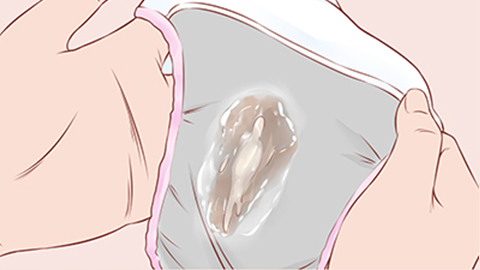What are the abnormal characteristics of vaginal discharge?
Generally, abnormal vaginal discharge includes increased volume of vaginal discharge, changes in color, abnormal texture, unusual odor, bloody discharge, and so on. The specific analysis is as follows:

1. Increased Vaginal Discharge
After excluding physiological factors, significantly increased vaginal discharge may be caused by vaginal, cervical, or pelvic inflammation. Inflammatory stimulation increases secretion from the vagina and cervix. For example, in vaginitis, a large exudation of inflammatory cells leads to a significant increase in vaginal discharge.
2. Changes in Color of Vaginal Discharge
Normal vaginal discharge is white. If the discharge appears yellow, it may indicate bacterial infection, such as gonococcal vaginitis; yellow-green discharge often suggests trichomoniasis; and curd-like white discharge is usually associated with fungal vaginitis. A large proliferation of Candida albicans forms a curd-like appearance.
3. Abnormal Texture of Vaginal Discharge
Normal vaginal discharge is viscous and uniform. If the discharge is thin and purulent, it might indicate bacterial vaginosis. Bacterial infection disrupts the normal vaginal flora balance, leading to changes in the texture of the discharge.
4. Unusual Odor of Vaginal Discharge
Normal vaginal discharge has no obvious odor or only a slight fishy smell. If the discharge has a foul odor, it is commonly seen in severe anaerobic bacterial infections, such as bacterial vaginosis. Special metabolic products produced by anaerobic bacteria cause the unpleasant smell. If the discharge has a fishy odor, it is often associated with Gardnerella infection. This odor may worsen after sexual intercourse.
5. Blood-tinged Vaginal Discharge
Vaginal discharge mixed with blood, varying in amount, may signal diseases such as cervical polyps, cervical cancer, or endometrial cancer. Cervical polyps are fragile and prone to bleeding. Cancerous tissues grow rapidly, leading to insufficient blood supply, local tissue necrosis, and bleeding, which mixes with the vaginal discharge.
In daily life, it is important to maintain personal hygiene. Wash the vulva daily with warm water, keep it clean and dry, change underwear frequently, and choose cotton underwear with good breathability to reduce bacterial growth. Avoid excessive vaginal douching, as the vagina has its own microbial balance. Overuse of cleansing solutions can disrupt this balance and increase the risk of infection. Normally, washing with warm water is sufficient.





